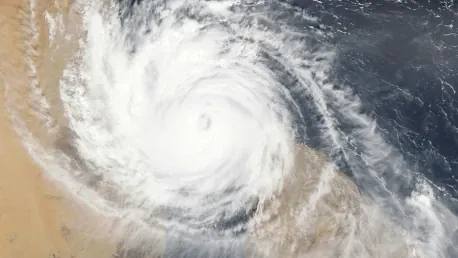The growing problem of space debris, often referred to as space junk, is becoming increasingly critical, particularly within Low Earth Orbit (LEO). The recent incident involving the Intelsat 33e satellite, which shattered into approximately 20 fragments, has further exacerbated the situation. This article delves into the broader threats posed by the accumulation of space debris, especially in view of the Kessler Syndrome, an escalating risk of collision-induced debris that could potentially render this orbital region unusable.
The Importance of Low Earth Orbit (LEO)
Advantages of LEO
Low Earth Orbit (LEO), defined as the space zone ranging from 100 to 1,200 miles above Earth’s surface, is a primary operational area for a majority of satellites and space stations. This proximity to Earth offers several advantages: reduced launch costs, faster orbital speeds allowing multiple daily overhead passes, and lower latency for data transmission. These features have made LEO the preferred orbit for numerous commercial communication satellites, internet service satellites, and notable space infrastructures like the International Space Station (ISS).
The benefits of operating within LEO are evident in numerous aspects. Reduced launch costs make it economically feasible for a wider range of organizations to deploy satellites, from large telecommunications companies to smaller private ventures. Faster orbital speeds enable satellites to complete multiple passes over specific areas within a single day, significantly enhancing their observational capabilities. Lower latency in data transmission is particularly beneficial for real-time applications such as satellite internet and global positioning systems (GPS), ensuring timely data flow essential for navigation, communication services, and various other critical operations.
Overcrowding Challenges
However, the convenience and benefits that LEO offers come with significant overcrowding challenges. The ISS, hovering approximately 250 miles above Earth, epitomizes the dense traffic in this space region. Thousands of active satellites orbit within this range, crucially supporting technologies including weather forecasting, global positioning systems (GPS), broadband internet, and television services. The close quarters in LEO increase the likelihood of accidental collisions between satellites and other space debris, which further contributes to the mounting problem of space junk.
The persistence of overcrowding in LEO poses serious risks to current and future space missions. With the rapid expansion of satellite constellations such as Elon Musk’s Starlink network, the demographic in LEO is growing exponentially. This has led to numerous instances where the ISS and other satellites have been forced to perform evasive maneuvers to avoid potential collisions. The frequent need for such maneuvers underscores the precarious nature of operations within LEO and highlights the importance of developing more robust traffic management protocols to ensure the safe navigation of this congested space corridor.
The Escalation of Space Debris
Historical Context and Fragmentation Events
The relentless increase in space activities, characterized by the deployment of spacecraft and satellites since 1957, has resulted in over 650 fragmentation events. These events include collisions, explosions, and even deliberate satellite destructions. A notorious example is Russia’s 2021 destruction of one of its own satellites during a military exercise, which resulted in over 1,500 detectable debris fragments. Each of these incidents adds to the burgeoning field of space debris, complicating space missions and elevating the risks associated with space exploration and satellite operations.
The cumulative effect of these fragmentation events is the creation of a hazardous environment in LEO. Each piece of debris, regardless of size, poses a potential threat to operational satellites and crewed missions. The resulting debris clouds from such events have long-term impacts on space navigation and necessitate constant monitoring and possible rerouting of spacecraft. The sheer volume and speed at which this debris travels make it exceptionally difficult to mitigate its impact, emphasizing the need for stringent measures to control and reduce space debris.
The Kessler Syndrome
Through the theory of the Kessler Syndrome, posited by NASA scientists Donald Kessler and Burton Cour-Palais in 1978, the article illustrates a dire feedback loop scenario where collisions generate debris, which then triggers more collisions, ensuing an out-of-control spiral. This cycle of destruction poses the risk of making LEO uninhabitable, thereby putting future satellite launches, space explorations, and the essential technological services dependent on satellites in jeopardy. The theory essentially warns of a cascading effect, with each collision amplifying the density of debris, thereby increasing the probability of subsequent collisions.
The Kessler Syndrome indicates a tipping point beyond which the density of debris in orbit becomes unsustainable for safe space operations. In such a scenario, even a small piece of debris can cause significant damage due to the high velocity at which it travels. This creates not only a physical hazard but also raises financial and operational concerns for entities relying on space infrastructure. Preventing the onset of the Kessler Syndrome requires proactive measures to mitigate existing debris and minimize the generation of new debris through responsible space practices and international cooperation.
The Impact on Space Operations and Technologies
Risks to Astronauts and Space-Based Technologies
The ongoing fragmentation adds to the congestion in orbit, elevating the dangers for both astronauts and critical space-based technologies. Evidence showcasing these perils is the frequent maneuvers ISS has to perform to avert collisions with debris, one recent incident coming within just 2.5 miles of the station. Such close encounters underscore the potential for catastrophic collisions that could disrupt essential services provided by GPS, broadband internet, and television systems, among others. This, in turn, would have far-reaching consequences on modern life.
The risks posed to astronauts are particularly alarming, as the presence of high-velocity debris increases the chances of life-threatening incidents. Space missions often require precise navigational adjustments to avoid larger debris along their trajectories. In addition to physical dangers, the economic costs associated with repairing or replacing damaged technology can be substantial. Satellite operators must increasingly weigh the risks of operating in such a hazardous environment, prompting discussions on the need for more effective debris management strategies to protect valuable space infrastructure and human lives.
Consequences for Modern Life
The potential disruption of essential services due to space debris collisions would have significant impacts on various aspects of contemporary life. Technologies that rely on satellites, such as weather forecasting, global positioning systems (GPS), broadband internet, and television services, could be severely impaired. This underscores the urgency of addressing the space debris issue to ensure the continuity and safety of these critical services. The dependency on satellite-based infrastructure for everyday activities underscores the broader societal implications of unmitigated space debris.
As society becomes increasingly interconnected through technology, the implications of service disruptions grow more severe. Interruptions in satellite communications can affect everything from emergency response systems to international business operations. The global economy, reliant on real-time data transmission and accurate geolocation services, could face significant setbacks. Thus, there is an urgent need for comprehensive solutions to the space debris problem, not only to secure the future of space exploration but also to protect the intricate web of services that sustain modern civilization.
Efforts to Mitigate Space Debris
Technological Solutions
Efforts to mitigate these risks have been initiated, though they face substantial challenges. The European Space Agency (ESA) has spearheaded initiatives like Clearsat-1 in collaboration with Swiss startup ClearSpace, aimed at capturing and safely deorbiting defunct satellites. Similarly, technologies such as drag sails are devised to hasten the natural descent of debris, allowing it to burn up harmlessly in Earth’s atmosphere. However, tracking and mitigating space debris presents a colossal challenge. Current estimates by the ESA suggest there are over 40,500 pieces of debris greater than 10 centimeters, alongside millions of smaller fragments that evade reliable detection.
The technical challenge lies in devising means to accurately track, target, and neutralize debris in a cost-effective manner. Many of the proposed solutions involve using ground-based radar and telescopic observations to identify and continuously monitor debris. Innovative ideas, such as deploying trawler satellites equipped with nets or robotic arms to collect debris, are also being explored. The complexity and scale of the problem necessitate a multi-faceted approach, incorporating advanced technologies and collaborative efforts to develop and implement efficient debris management systems.
International Collaboration and Regulations
The article conveys a consensus among experts on the dire necessity for international collaboration in establishing and enforcing binding space debris regulations. This includes traffic and resource management frameworks as posited by initiatives like the United Nations’ Pact for the Future. However, enforcement remains a critical obstacle. Without stringent regulations and guidelines, risks of space overcrowding and collision persist. Dr. Vishnu Reddy of the University of Arizona underscores the importance of regulatory norms driven by industry consensus to mitigate these issues effectively.
Globally coordinated efforts are essential for the effective mitigation of space debris. Countries, space agencies, and private companies must collectively agree on and adhere to comprehensive guidelines that govern space traffic and debris management. Collaborative frameworks could include standardized protocols for satellite decommissioning, sharing of tracking data, and joint missions to remove debris from orbit. Without international cooperation, the efforts of individual entities may fall short, exacerbating the already critical situation in LEO and putting future space endeavors at significant risk.
The Future of Space Debris Management
The Role of Private Entities
The increasing issue of space debris, commonly known as space junk, is rapidly becoming a significant concern, especially within Low Earth Orbit (LEO). The recent event involving the Intelsat 33e satellite, which broke into about 20 pieces, has significantly worsened the problem. This article explores the larger threats posed by the growing accumulation of space debris, with particular attention to the Kessler Syndrome. The Kessler Syndrome refers to the escalating risk of collisions that generate more debris, which could potentially create a chain reaction of impacts. This scenario could make this orbital region unusable for satellites, space missions, and other vital activities. With the burgeoning number of satellites being launched for various purposes, such as communication and earth observation, the density of objects in LEO is higher than ever. Effective measures are urgently needed to address this debris problem before it reaches a point where space operations become increasingly hazardous and unsustainable.









